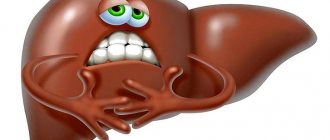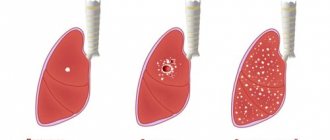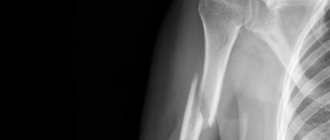Hepatitis B is a very dangerous disease. The penetration of this virus into the human body by contact from a carrier of this disease and through infected blood leads to its rapid reproduction.
A person does not always know that he is sick, since the process takes place painlessly for a long time, the patient becomes a source of infection for other people. Treatment of hepatitis B is a complex, lengthy process; methods of getting rid of this problem depend on the stage of the disease and the individual characteristics of the patient.
Is there a cure for hepatitis B?
This disease has two forms:
Each patient with any of these forms has a chance to recover. The success of treatment depends on many factors, the main ones being the severity of the disease and its form. Treatment of hepatitis B is a complex process. Advanced cases, when liver cirrhosis begins to develop, have no chance of recovery. If a patient is diagnosed with hepatitis B, treatment will be effective if he consults a doctor in a timely manner. The degree of damage to the body by the disease plays a major role in prescribing treatment.
If before visiting the doctor, treatment for the acute form was not carried out, since the symptoms did not manifest themselves or the patient was not treated for various reasons, the treatment of hepatitis B will be complicated by its transition from the acute to the chronic form.
The disease progresses differently in each person, at different speeds. If there are no obvious symptoms, and hepatitis B is asymptomatic in the initial stages, liver cirrhosis will not be diagnosed. With the rapid development of hepatitis in 5% of cases, there is a high risk of liver cancer. How promptly the patient consults a specialist will determine the possibility of his recovery. In the chronic form, hepatitis B is treated, with the main efforts being directed at reducing the viral load. It is currently impossible to get rid of the virus forever, but treatment must be carried out to alleviate the patient’s condition and stop its development.
Acute form of the disease
In the acute form of the disease, treatment of hepatitis B is usually limited to therapeutic measures, the task of which is to reduce intoxication of the body and support liver function. Antiviral drugs are not prescribed.
Treatment in this case is based on detoxification measures. The patient is injected intravenously with the help of droppers with special solutions that speed up the process of eliminating toxins and prevent dehydration caused by frequent vomiting and diarrhea. It is possible to prescribe medications that reduce the absorption of toxins into the blood, as well as some vitamins.
Our regular reader
Our regular reader coped with HEPATITIS with effective medications - Sofosbuvir and Daclatasvir. According to patient reviews, the result is 97% - complete elimination of the virus. We decided to recommend ACTUAL therapy to you. The result is almost 100%. EFFECTIVE METHOD.
What influences recovery?
If hepatitis B is detected, treatment begins with an in-depth examination. This will allow you to obtain all the necessary data on the degree of damage to the body by the virus, diagnose the condition of the liver, and make a decision on how to treat hepatitis B, fight its aggressiveness, and extinguish its activity. Recovery, in addition to timely contact with a doctor, is influenced by the accuracy of diagnosis and the correctness of the prescribed treatment. Correctly prescribing treatment and increasing the chances of a favorable outcome of the disease will help:
- determining the amount of virus in the blood;
- determination of the virus genotype;
- determination of the degree of drug resistance.
The patient needs to prepare himself for long-term treatment, which can last a lifetime.
Hepatitis B can be treated if the patient follows all the doctors' recommendations. From the first days of identifying this dangerous disease, the doctor is obliged to provide the patient with information on how to treat hepatitis B and cure it.
The attending physician should tell the patient about how hepatitis B is treated in adults with different forms of the disease, and about ways to control this disease throughout life. It is necessary to monitor the condition of the liver by performing elastometry.
How to cure hepatitis B forever? The patient will not be able to escape the disease, but being under the continuous supervision of a hepatologist, there is a chance to improve the quality of his life. You can improve your health by making the right, prompt decisions if the course of the disease changes or if it develops more rapidly.
A hepatologist will help the patient learn how to treat hepatitis B and how to completely cure it. He must determine not only drug treatment, but also diet, and indicate how to permanently change his lifestyle.
Hepatitis B and diet
An integral part of the treatment of a disease of any form and severity is a special diet. As a rule, according to the Pevzner classification, diet number five is prescribed. Alcohol is completely excluded. Fats, salty, fried and canned foods are significantly limited.
The diet is enriched with dairy products, vegetable soups and cereals, fruit juices and purees. It is recommended to eat food five times a day. The purpose of the diet is to normalize the activity of the gallbladder, as well as the sphincter of Oddi. Ideally, it is better to follow the diet for the rest of your life.
If the patient is being treated at home, and this is possible with mild forms of the disease, it is important to remember some rules. You need to drink more fluids to remove toxins. You can supplement the treatment of hepatitis B with proven folk remedies. Physical activity should be reduced: work and school should be postponed until your health improves.
What drugs can be used?
Treatment for chronic hepatitis B is based on:
- on a decrease in the quantitative indicators of the virus in the patient’s body;
- on preventive measures that will avoid infecting others with the virus;
- on preventing the development of various complications (liver cancer, cirrhosis).
Antiviral therapy for hepatitis B is designed to:
- reduce human infectivity;
- reduce liver cell damage;
- prevent the development of liver cirrhosis.
Unfortunately, treatment for hepatitis B with various methods will not rid the patient of the virus. But successful therapy can reduce the severity of the destructive process occurring in the body.
Interferons
Hepatitis B, the treatment of which must be started immediately after establishing the full picture of the disease, is susceptible to the influence of interferon-a (IFN-a): recombinant and lymphoblastoid. This drug is able to improve the expression of HLA class proteins and activate the activity of interleukin-2.
Nucleoside analogues
So-called nucleoside analogues are prescribed as effective drugs:
These drugs are antiviral agents that can, to one degree or another, reduce the replicative activity of the virus.
What it is?
Hepatitis B is a virus that, upon entering the human body, begins to have a negative effect on vital internal organs. The liver, which is affected at the microcellular level, suffers most from this disease. Group B hepatitis may be asymptomatic or may be accompanied by pronounced symptoms. Having passed into the chronic stage, this viral infectious disease often provokes the development of liver cirrhosis and cancer.
For many years, statistics on this disease have been kept in all countries of the world, the results of which are published in specialized media:
- Acute hepatitis B, detected in newborns, becomes chronic in 90% of cases;
- The acute form of hepatitis B, detected in young people with a normal immune system, very rarely becomes chronic - in 1% of cases;
- Acute group B hepatitis, detected in adults, becomes chronic in 10% of cases.
When vaccinated against hepatitis B, patients begin to develop immunity to this disease:
- After the introduction of the first vaccine - in 50% of patients;
- After administration of the second vaccine - in 75% of patients;
- After the administration of the third vaccine - in 100% of patients.
The chronic form of hepatitis B is diagnosed in children:
- The age of which ranges from 1 year to 5 years – in 25%-50% of cases;
- Those who were infected during childbirth - in 90% of cases.
Side effects and treatment effectiveness
To understand how to cure hepatitis B with the help of interferon drugs and nucleoside analogues, you need to familiarize yourself with their action and side effects.
The effectiveness of treatment with simple interferons will be high with long-term use. But these drugs are unreliable because they do not stay in the body for long, so they need to be taken for a long time.
How to cure hepatitis B with interferon? Only long-term treatment will help improve the patient's condition. It should be remembered that the consequence of the action of interferons is the destruction of hepatocytes affected by the virus.
New in the treatment of hepatitis B - pegylated interferons. They are more effective because they remain in the blood longer, suppressing the ability of viruses to develop. One of these drugs is Pegasys.
How is hepatitis B treated with Lamivudine? The use of this medication for 12 months leads to normalization of aminotransferase activity in approximately 21% of patients, after 2-3 years of use in 27-35%. The histological picture statistically improves after 1 year of use in 50% of patients treated with this drug.
Treatment
There is no specific treatment for hepatitis B. The choice of drugs depends on the severity of the process. In any case, the primary purpose will be to prescribe a specialized diet, Table No. 5, which excludes the consumption of fatty, fried, smoked, spicy foods, marinades, pickles, canned food, and baked goods. It is forbidden to drink strong coffee, soda, or alcohol. It is recommended to eat more plant foods and cook in a gentle manner (serve food warm, meat pureed).
In adulthood, such vaccination is carried out for those who are at risk in the outbreak of the disease or due to professional necessity.
In the chronic form, an integrated approach to treatment is proposed, antiviral treatment and restorative therapy are used:
- Antiviral drugs (Sofosbuvir, Ravidasvir, Daclatosvir) are aimed at suppressing the reproduction of the virus and its destruction (which is extremely difficult),
- Hepatoprotectors based on ursodeoxycholic acid (Ursosan) to restore the functioning of hepatocytes and liver structure, and prevent further progression of complications
- Vitamin and mineral complexes to strengthen the body
How to treat hepatitis B at home?
How is hepatitis B treated at home using traditional medicine? You need to adhere to a certain diet. Recommended table number 5.
It is important to avoid:
- eating fatty foods;
- confectionery products;
- pickles;
- citrus fruits;
- spicy dishes.
Various herbal decoctions are used:
- dill seeds;
- yarrow;
- mint, etc.
Such treatment can improve liver function, but such methods cannot completely defeat hepatitis B. Even an experienced doctor does not know how to completely cure this disease, but it is possible to stop its development and do everything possible to alleviate the patient’s condition by using effective drugs. You should not get carried away solely by self-medication, since many people have the mistaken opinion that hepatitis B can be cured using various traditional methods. Herbs, infusions, and decoctions are capable of removing toxic substances from the body and have a beneficial effect on the general condition of the body. Such treatment methods can be used as auxiliary means.
Treatment of chronic hepatitis B
The statement that hepatitis B is completely curable is incorrect, since there are no antiviral drugs that have a direct effect. At the moment, no drugs have been found that would effectively suppress the replication of the virus... Therefore, it is impossible to completely cure hepatitis B.
The chronic course of the disease does not give the patient a chance for a complete recovery. But antiviral therapy must be carried out, without this the patient’s condition will rapidly deteriorate. Statistics show that this virus is extremely aggressive, the worst prognosis is cirrhosis, liver cancer in approximately 20% of patients 20–30 years after the onset of the disease.
When identifying signs of the disease, it is important to undergo diagnostic procedures to clarify the clinical picture.
Useful video
For more information about chronic hepatitis B, watch this video:
Chronic hepatitis B is a dangerous viral disease that disrupts the functioning of the liver and destroys the tissue of this vital organ. If the disease is neglected, the disease progresses to the stage of cirrhosis. In other cases, malignant neoplasms form in the liver. All this leads to death. But can hepatitis B be cured? You can find the answer to this question in our article.
Surgery for hepatitis B
In case of significant liver damage and large-scale manifestations of cirrhosis, as well as in the development of cancer, the only way to prolong the patient’s life is a liver transplant. Here the problem arises with the selection of a donor organ: it can be the liver of a deceased person, or a fragment of the liver of a living person - one of the blood relatives. However, it is not always possible to select a suitable donor.
Diet for hepatitis B
Development of chronic hepatitis B
Treatment of chronic hepatitis B is a complex and time-consuming process. It takes a lot of time and effort, but often the disease is not completely defeated. However, patients continue to worry about whether hepatitis B can be cured.
The causative agent of the disease in question is a virus that has some features:
- The pathogen only affects humans. Animals are not its carriers;
- The virus is very resistant to high temperatures and other negative environmental influences;
- The pathogen multiplies primarily in the liver, penetrating the patient’s blood.
In order to find out whether chronic hepatitis B can be cured, you should initially determine the possible route of infection and the stage of development of the disease.
Routes of infection
You can become infected with chronic hepatitis B through the following routes of infection:
- Direct interaction with the blood of a sick person;
- Unprotected sexual contact with a patient;
- Prenatal, during pregnancy or during childbirth from a sick mother to a baby.
The main risk groups are small children under the age of five and people with extremely low immunity. In particular, chronic hepatitis B often develops in patients suffering from an illness caused by the human immunodeficiency virus (HIV).
Symptoms and stages of development
Viral chronic hepatitis B is a fairly common disease. According to official medical statistics, approximately 1/3 of the entire population of our planet suffers from this disease. The chronic form is usually a consequence of the acute phase of hepatovirus infection. The development of pathology includes the following stages:
- Incubation period. On average it lasts about 50 days. The pathogen takes hold in the human body and rapidly multiplies in the tissues of its liver;
- Immune tolerance. The virus penetrates hepatocytes but does not damage them. This phase is asymptomatic, but the presence of the disease can be detected through tests;
- Period of activity (acute). At this time, the pathogen multiplies uncontrollably. In this case, liver cells are damaged. The active period of hepatitis B is accompanied by characteristic symptoms. It is during this phase that chronic hepatitis B is treated;
- Virus carriage (remission). Long periods of weakening or complete absence of symptoms. However, it is possible to become infected from a patient at this stage.
The return of the acute period can be triggered by factors such as the presence of the herpes virus in the body, neglect of personal hygiene, and abuse of alcoholic beverages. Symptoms of chronic hepatitis B, which often appear only in the acute phase, are as follows:
- Severe pain in the right hypochondrium. The nature of pain can be completely different - from aching pain to acute;
- General weakness, apathy, increased fatigue, drowsiness;
- Hypotension and bradycardia;
- The appearance of an itchy rash on the skin;
- Nausea, vomiting, diarrhea. The feces are whitish and discolored;
- Dramatic weight loss;
- Jaundice of the skin and sclera;
- An increase in the size of the liver, which is easily detected by palpation.
With a chronic course of the disease, symptoms may be absent or minor. Signs of an upcoming exacerbation are red, itchy palms and diarrhea.
Symptoms
One of the main symptoms is a yellow tint to the eyes.
The main symptoms appear in the icteric period of the disease. They are associated with a violation of the detoxification function of the liver, stagnation of bile, and the body’s immune response to the presence of the pathogen:
- An increase in the symptoms of the prodromal period - weakness, apathy, drowsiness, body aches, dizziness, hemorrhagic syndrome (nosebleeds, bleeding gums, heavy and prolonged menstruation, hemorrhages in the skin).
- A jaundiced tint appears on the skin, mucous membranes, and sclera of the eye due to excess bilirubin in the blood.
- Disturbances in the exchange of bile pigments are also associated with the appearance of itchy skin, discoloration of feces and darkening of urine.
- The liver is enlarged in size, in this area there is a feeling of heaviness, a dull bursting pain, which is associated with stretching of its capsule.
- Digestive disorders worsen - nausea, causeless vomiting, bitterness in the mouth, constipation or diarrhea, belching, increased gas formation in the intestines.
- There is a decrease in blood pressure and heart rate.
Diagnostic methods
The sooner the disease is diagnosed, the greater the chances of curing it. As for chronic hepatitis B, treatment can give a negative result if the disease is advanced. Therefore, it is important to know the methods for diagnosing this disease at different stages of its development. These are:
- Blood biochemistry analysis;
- Fiber testing;
- Analysis for markers of viral hepatitis B;
- Elastography and ultrasound of the affected organ.
Let's take a closer look at each of these methods for detecting chronic hepatitis.
Blood biochemistry
Due to disruption of the functioning of such a vital organ as the liver, the biochemical composition of the patient’s blood is also disrupted. Therefore, analysis of the biochemistry of the main fluid of the human body always helps to identify CHB.
For the purpose of the survey, the following are studied:
- ALT and AST (aminotransferase) levels. These are liver tissue enzymes. If ALT is higher than normal, viral damage to the organ is diagnosed. An increase in AST levels indicates the destruction of hepatocytes;
- Albumin level. Low levels of this liver protein indicate viral hepatitis;
- Ferritin (protein containing iron) levels. If it is elevated, the cells of the organ are damaged.
If the liver stops functioning normally, excess bilirubin, the main bile enzyme, is also found in the blood.
Fibrotest and markers of chronic hepatitis B
When hepatocytes are destroyed in chronic hepatitis B, the decomposed liver cells are intensively replaced by connective tissue. This leads to the development of a deadly complication of CGD – fibrosis. To identify fibrotic changes in the organ affected by the infection, along with a biochemical blood test, a fibrotest is performed.
There are 2 types of fiber testing:
- FibroTest – establishes the quantitative value of fractions of proteins, bilirubin, ALT and enzymes;
- FibroMax - in addition to the points listed above, determines AST, triglycerides, glucose and cholesterol levels.
When infected with any virus, antibodies to the antigens of the causative agent appear in the patient’s blood. They are the markers of a certain disease. The marker of chronic hepatitis B is HBsAg (Australian antigen). Donating venous blood for testing will help determine its presence.
These tests require preparation. You should not eat 8 hours before the examination; you should not even drink water immediately before donating blood.
Elastography and ultrasound of the liver
If problems arise when making a diagnosis based on blood tests, hardware methods for diagnosing hepatitis B are used. In particular, these are:
- Ultrasound examination (ultrasound). Healthy and inflammatory liver tissues absorb ultrasound rays differently. Thanks to this, the result of the study will be not only the determination of hepatitis B, but also its stage;
- Elastography. An innovative way to determine the affected area. The researcher’s monitor displays an image in which healthy and diseased parts of the body are marked in different colors.
These methods for diagnosing chronic hepatitis B are quite informative and completely painless.
What can you eat?
Group B hepatitis is a disease that affects the liver. As a result of the development of infectious and inflammatory processes, this vital organ is affected at the microcellular level. In order to facilitate liver function during treatment, the patient must adhere to a diet. Experts recommend that patients use a specially designed dietary program.
First of all, a person will have to divide his daily food intake into 5-6 meals, equal in volume and amount of nutrients. During therapy, it is strictly forbidden to take part in mass feasts, which are usually accompanied by the consumption of large amounts of junk food and alcoholic beverages. In the evening, the patient should eat light foods that will not put a strong burden on the digestive system.
The following foods should be excluded from the daily diet of a patient with hepatitis B:
- Cold drinks and ice cream;
- Fatty types of meat and fish;
- Spicy dishes and seasonings;
- Smoked meats and pickles;
- Vegetables that contain essential oils in large quantities;
- Alcoholic and carbonated drinks;
- Waterfowl meat, as it puts a lot of stress on the pancreas;
- Lard and other foods high in cholesterol.
This category of patients is recommended to eat daily:
- Soybean, olive and vegetable oil;
- Chicken egg white;
- Cereals, especially oatmeal;
- Dairy products;
- Lean meats and fish.
Dishes should be steamed, as during such processing the maximum nutrients are retained in the products. The daily diet should contain no more than 3,500 kcal (100 g of proteins, 100 g of fat, 450 g of carbohydrates).
Prognosis and consequences of the disease
Of all the known types of hepatitis, the disease in question is the most dangerous. The reason for this is the large number of complications of CHB. Most often, these complications (fibrosis, liver failure, cancer) are a consequence of late diagnosis. However, stopping the development of chronic hepatitis B in the early stages is quite difficult due to the blurred clinical picture of this disease. Therefore, stable remission can be achieved only in 50-60 cases out of 100.
In turn, in patients who have suffered an acute form, CHB is highly likely to develop if:
- The patient has suffered other viral diseases;
- The patient abuses alcohol;
- During an exacerbation, a large number of antibiotics and painkillers were taken;
- The patient does not adhere to a specific diet.
Is it possible to cure hepatitis B in its chronic form completely? Currently, unfortunately, no. This disease remains incurable. However, with the right treatment for chronic hepatitis B, it is possible to successfully stop the disease and qualitatively prolong the patient’s life.
According to official WHO data, 30% of the total number of patients with CHB will progress despite treatment. In this case, cancer or fibrosis develops, which will lead to death.
One of the main questions that concerns a person infected with the hepatitis B virus is: can hepatitis B be completely cured?
Routes of transmission of hepatitis B
There are a large number of known ways in which the hepatitis B pathogen enters the human body.
The most common routes of infection are the following:
- sexual tract;
- infection of the child from the mother at the time of birth;
- contact with the blood of a person infected with the virus;
- the use of one toothbrush, razor, or manicure set by different people, including infected people;
- carrying out medical procedures;
- the use of non-sterile accessories when performing various manipulations on the body, for example, tattooing or piercing;
- use of non-sterile syringes;
- infection from blood transfusion;
- chewing food for a child.
Chinese researchers have proven the possibility of transmitting the virus using a transmissible mechanism. The pathogen transfer factor in this case is mosquito bites.
Human susceptibility to the virus is quite high. Children under one year of age are most susceptible. Some countries with tropical climates have infection rates of up to 20% among children.
Pathogenesis and forms of the disease
From the site of introduction, the pathogenic organism enters with the bloodstream into the liver tissue, where the process of viral replication occurs in the cellular structures. Doctors have received information about the possibility of extrarenal reproduction of virions in bone marrow cells, blood cells, lymph nodes and spleen cells. In the process of formation of new virions, inflammation and necrotic changes develop in the liver tissue. As a result of changes in the biochemistry of the body, various clinical manifestations and changes in laboratory tests are observed.
A morphological examination reveals dystrophic changes in hepatocytes, island necrosis, and in more severe cases, massive necrosis of liver tissue.
In the cholestatic variant of the disease, involvement of the vitelline ducts with the likelihood of blood clots from bile and an increase in the amount of bilirubin in the cells of the liver tissue are observed. Viral hepatitis B is characterized by diverse clinical forms of manifestation, which are largely dependent on the processes occurring with the virus in the cell of the liver tissue.
Complications
Viral hepatitis B is a rather dangerous disease with a number of serious complications. The most dangerous is the fulminant form of the disease, which in a matter of days leads to the development of acute liver failure, cerebral edema and coma. Severe hemorrhagic syndrome in an acute course can cause massive internal bleeding and even death. The chronic form often progresses to cirrhosis of the liver.
However, it should be noted that the disease still has a low mortality rate of only 1%.
How does hepatitis B manifest?
Viral hepatitis manifests itself in the form of acute or chronic forms of the disease. The appearance of the first clinical manifestations of acute hepatitis is observed in the period from six weeks to six months from the moment of infection.
The symptoms that occur during the development of hepatitis B are similar to those that occur after the human body is infected with hepatitis A. These types of hepatitis can only be recognized by conducting a specialized laboratory blood test.
Infection of the body and the development of the disease begin with:
- appearance of weakness;
- decreased appetite;
- the appearance of nausea;
- pain in the right hypochondrium;
- I am worried about pain in joints and muscle tissue.
Over time, the disease passes into the icteric stage. This stage manifests itself:
- yellow staining of the eye sclera;
- the appearance of itching of the skin;
- darkening of urine;
- lightening of feces.
In 30% of cases, hepatitis B infection occurs in an anicteric form.
Asymptomatic types of the disease are characterized by the absence of visible disease-specific clinical signs. However, as a result of the development of the disease, antigens and antibodies are formed in the blood, which are detected during appropriate laboratory tests. In the case of the development of a subclinical variant in the body, signs of biochemical damage to the human liver tissue are additionally detected.
The clinically pronounced form of the disease is the acute icteric form, characterized by the presence of cytolytic syndrome - a condition when the maximum manifestation of signs of the disease is observed.
The course of the disease can be divided into several stages, differing in characteristics:
- incubation stage;
- pre-icteric stage;
- icteric stage;
- decay stage.
The duration of incubation ranges from 6 weeks to 6 months. The duration of the pre-icteric stage of development is 4-10 days (very rarely 3-4 weeks). The duration of the icteric phase ranges from 14 to 42 days. The duration of the extinction phase is 2-12 months.
Hepatitis B in its acute infectious form ends with appropriate treatment and the person recovers. But it is worth noting that in 2% of cases the disease develops into a “fulminant” type of illness, which has a mortality rate of 63-93%.
Dangerous for patients is the transition of an acute form of the disease to a chronic form (if it lasts for a long time). Chronic hepatitis B contributes to the development of cirrhosis or cancer in the body.
Types and stages
According to the nature of the disease, acute, subacute, chronic and fulminant hepatitis are distinguished.
According to the degree of manifestation of symptoms - asymptomatic form (carriage), anicteric and icteric.
The disease goes through several stages of development:
- The incubation period can last from a couple of months to six months. There are no clinical manifestations. At this time, the pathogen actively multiplies in the liver.
- The prodromal period can have several clinical variants:
- Dyspeptic – nausea up to vomiting, loss of appetite and stool
- Arthralgic (flu-like) – joint pain, increased body temperature, chills, muscle aches. There may be a rash similar to urticaria, nosebleeds and bleeding of mucous membranes
- Asthenovegetative – general weakness, lethargy, malaise, drowsiness
- The peak stage - all the main symptoms of the disease appear. In the anicteric form, symptoms of general intoxication persist without changes in the color of the skin, urine and feces, the disease has a sluggish development, patients often do not consult a doctor and pose a danger in terms of the spread of the disease.
- Recovery stage. But in approximately 10% of patients the process becomes chronic. Worries about constant weakness, enlarged liver, nausea, temperature about 37-37.5 C. The most dangerous complication of chronic disease is cirrhosis of the liver.
Is it possible to cure hepatitis B completely?
Hepatitis B in its acute form can be completely cured with timely application of treatment methods.
Chronic hepatitis B is cured forever in 50% of those suffering from this disease after using an intensive course of antiviral therapy; the likelihood of cure depends on a large number of factors influencing the course of the disease.
The following population groups are at risk:
- persons with promiscuous sex life;
- homosexual men;
- sexual partners of infected people;
- family members of an infected person;
- children born to infected mothers;
- health workers;
- people using an artificial kidney.
Preventive and protective measures that help reduce the likelihood of infection with the hepatitis B pathogen are as follows:
- protection from sexual intercourse with a person who is a carrier of a viral infection;
- examination for the presence of the hepatitis B pathogen in women bearing a child;
- observing hygiene rules if you are surrounded by a person infected with hepatitis B;
- use of personal instruments during cosmetic procedures;
- use of disposable medical instruments for acupuncture and tattooing;
- vaccinating the population against the hepatitis B virus.
Following these simple rules greatly reduces the risk of contracting this dangerous disease.
Etiology
The causative agent of this disease is the hepatitis B virus. The pathogen is extremely resistant to adverse environmental factors, is not destroyed by boiling for 60 minutes, can remain virulent for years when frozen, and is present on objects for a week at room temperature. However, disinfectant solutions inactivate it quite quickly. In medical conditions, it dies when heated to 120 C for 45 minutes or when exposed to dry air at 180 C for 60 minutes.












